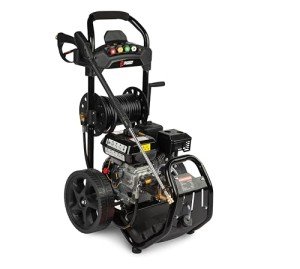The Comprehensive Guide to Power Tools: Understanding Their Types, Uses, and Maintenance
Power tools are important in the contemporary workshop, allowing jobs that would otherwise be tiresome and lengthy when performed with hand tools. Ranging from basic drills to complicated woodworking devices, power tools use performance and accuracy that can dramatically change the method specialists and hobbyists approach their projects. This post checks out the numerous types of power tools, their applications, upkeep suggestions, and frequently asked questions.
Types of Power Tools
Power tools are usually classified into two primary groups: cordless and corded. Online Power Tools has its advantages and ideal uses.
1. Cordless Power Tools
Cordless tools run on rechargeable batteries, supplying higher movement and ease of use. Some common types include:
- Cordless Drill/Driver: Essential for drilling holes and driving screws, a cordless drill is an essential in any tool kit.
- Cordless Circular Saw: Ideal for cutting lumber and other products, particularly when portability is required.
- Cordless Jigsaw: Useful for making complex cuts and curves in numerous products.
- Cordless Impact Driver: Perfect for driving long screws and fasteners into tough materials quickly.
2. Corded Power Tools
While corded tools may be less portable, they typically offer more power and are frequently used for heavier-duty tasks. Key examples consist of:
- Table Saw: A fixed tool that uses precision cutting for woodworking tasks.
- Miter Saw: Used for making precise crosscuts and miters in a workpiece.
- Angle Grinder: Useful for cutting or grinding metal and concrete.
- Drill Press: A fixed drill that permits accomplishing higher precision in drilling holes.
Comparison Table of Cordless and Corded Power Tools
| Function | Cordless Power Tools | Corded Power Tools |
|---|---|---|
| Mobility | High | Limited by power cord |
| Power | Less effective | More powerful |
| Weight | Lighter due to lack of cable | Much heavier due to motor and cord |
| Battery Life | Minimal by battery life | Constant power supply |
| Cost | Typically more costly | Usually more affordable |
Applications of Power Tools
Power tools are utilized throughout various industries and activities. Understanding the best tool for the task can boost efficiency and results. Some common applications consist of:
- Construction Projects: Drills, saws, and nailers dominate job websites for framing and roof.
- Woodworking: Routers, sanders, and jointers assist in developing intricate and sleek wooden pieces.
- Automotive Repair: Impact wrenches and air compressors are crucial for dealing with vehicles.
- Home Improvement: DIY lovers make use of different tools for renovations, repair work, and landscaping jobs.
Popular Power Tools and Their Uses
Here are some often used power tools together with their primary applications:
Power Drill:
- Used for drilling holes and securing screws.
- Comes in different sizes for various applications.
Reciprocating Saw:
- Ideal for demolition work and cutting through products like wood, metal, and drywall.
Sander:
- Used for smoothing surface areas, offered in different types such as orbital and belt sanders.
Router:
- Employed in woodworking for burrowing an area in a piece of wood.
Nail Gun:
- A fast and effective tool for driving nails into wood and other products.
Maintenance Tips for Power Tools
Keeping power tools in optimal condition is necessary for safety and performance. Here are some maintenance pointers:
- Regular Cleaning: Dust and debris can accumulate in power tools. Routine cleaning assists preserve efficiency and extends tool life.
- Check Connections and Cords: Regularly check for fraying or damage to cables and connections. Change any broken parts immediately to avoid mishaps.
- Sharpen Blades and Bits: Dull blades can reduce efficiency and precision. Routine sharpening makes sure tidy cuts and faster operation.
- Lubrication: Certain tools require regular lubrication. Seek advice from the user handbook for specific suggestions.
- Storage: Store tools in a dry environment and in their cases if offered. This secures them from moisture and accidental damage.
Often Asked Questions (FAQs)
1. What safety gear should be used when using power tools?
- It is necessary to wear appropriate safety gear such as shatterproof glass, hearing protection, gloves, and a dust mask depending upon the tool in use.
2. How do I select the right power tool for a task?
- Consider the specific jobs you need to achieve, the product you'll be dealing with, and the tool's power capacity. Researching tools suited for those tasks will help in making the best option.
3. Are cordless tools as great as corded tools?
- Cordless tools provide benefit and mobility, while corded tools provide more power for much heavier tasks. Choose based upon your particular requirements.
4. How often should power tools be kept?
- Routine upkeep must be performed regularly, preferably after every usage. Comprehensive evaluations and maintenance ought to be done at least when a year.
5. What is the life-span of a typical power tool?
- The lifespan of power tools varies widely depending upon usage and quality but typically ranges from 5 to 15 years.
Power tools are valuable possessions for both specialists and DIY enthusiasts, offering effectiveness and accuracy unlike any hand tool. Comprehending the various types, applications, and upkeep treatments is important for optimizing their possible and making sure safety. With proper care and understanding, these tools can serve users effectively for lots of years, eventually enhancing performance and task results. By investing in quality tools and adhering to maintenance routines, one can make the most out of every project, irrespective of size or complexity.

